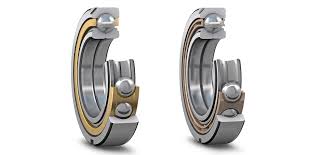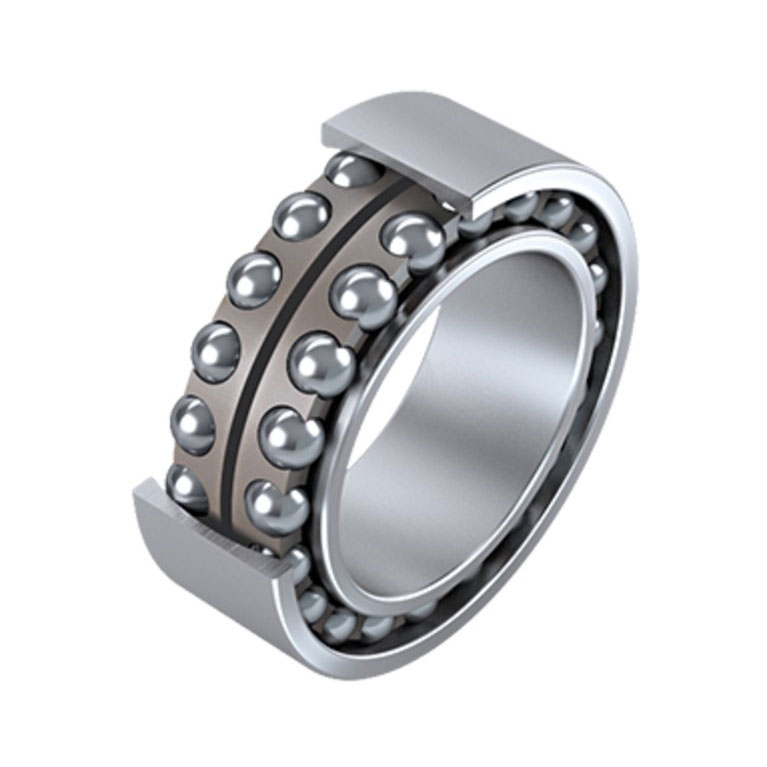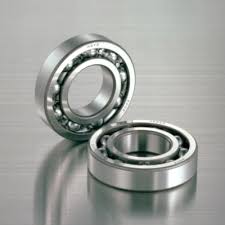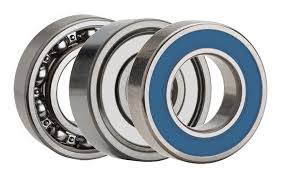Introduction
When it comes to smooth, efficient motion in machines, the battle between ball bearings and roller bearings is a hot topic. While both types serve the same essential purpose—reducing friction between moving parts—their design, application, and overall performance can differ greatly. But which one is better? The truth is, there isn’t a one-size-fits-all answer. It all depends on your specific needs. Let’s dive deeper into the world of ball bearings balls and roller bearings, breaking down their differences and advantages to help you make the right choice for your equipment or machinery.
1. What Are Ball Bearings?
To understand the debate between ball bearings and roller bearings, we first need to define what is a Bearing Dealers Near Me is. A ball bearing is a type of rolling-element bearing that uses small, spherical balls to maintain the separation between the bearing races. These balls roll inside the bearing to minimize friction and allow for smooth rotational motion.
2. What Are Roller Bearings?
On the other hand, roller bearings use cylindrical rollers instead of balls. The rolling elements in roller bearings create a line contact between the bearing races, as opposed to the point contact in Bearing Dealers in Lahore. This design change allows roller bearings to handle greater loads while still reducing friction, though they may not rotate as smoothly as their ball bearing counterparts.

Ball Bearing vs Roller Bearing
3. Key Differences Between Ball Bearings and Roller Bearings
Let’s break down the primary differences between ball bearings and roller bearings:
- Load Capacity: Roller bearings have a greater surface area of contact, allowing them to handle heavier loads than ball bearings.
- Speed: Ball bearings are typically better for high-speed applications, as they generate less friction.
- Precision: Due to their spherical nature, ball bearings are generally better for precise applications requiring smooth movement.
- Durability: Roller bearings often have a longer life in heavy-duty applications due to their ability to handle larger loads.
4. How Ball Bearings Work
Ball bearings rely on small, metal balls to roll between the inner and outer races, reducing friction and allowing parts to rotate smoothly. The key advantage of ball bearings lies in their low-friction design, which makes them ideal for applications requiring high speeds and minimal wear.

Ball Bearing vs Roller Bearing
5. How Roller Bearings Work
Roller bearings use cylinders instead of balls, distributing the load across a larger surface area. This design gives them a higher load-bearing capacity, which is particularly beneficial for heavy-duty industrial applications. However, roller bearings typically have a bit more resistance compared to ball bearings, which can make them less suitable for high-speed environments.
6. Advantages of Ball Bearings
So, why choose a ball bearing over a roller bearing? Here are a few key advantages:
- Smooth Operation: The rolling action of the balls ensures smooth, low-friction movement.
- Higher Speeds: Ball bearings excel in high-speed applications, thanks to their ability to minimize friction.
- Versatility: These bearings are versatile and can be used in a wide range of applications, from household appliances to cars and bicycles.
7. Advantages of Roller Bearings
Roller bearings bring their own set of advantages to the table:
- High Load Capacity: The design of roller bearings allows them to carry significantly higher loads than ball bearings.
- Durability: Roller bearings are more durable in harsh conditions or under constant heavy loads.
- Longevity: Due to their larger contact surface, roller bearings tend to last longer in industrial or heavy-duty machinery.
8. Which Bearing is Better for High-Speed Applications?
When it comes to high-speed applications, ball bearings usually take the lead. Their design reduces friction more effectively at high speeds, ensuring smoother operation. This is why you’ll often find ball bearings in applications like electric motors or turbines, where fast rotation is crucial.
9. Which Bearing is Better for Heavy Loads?
If you’re dealing with heavy machinery or industrial applications, roller bearings are likely the better option. The larger contact area between the cylindrical rollers and the races allows them to handle greater loads without wearing down quickly. For example, in construction equipment or conveyor belts, roller bearings are often the go-to choice.
10. Common Applications of Ball Bearings
Ball bearings are used in various everyday applications, thanks to their versatility and ability to reduce friction. Here are a few examples:
- Automobiles: From wheel hubs to transmissions, ball bearings are used throughout cars to ensure smooth operation.
- Home Appliances: Washing machines, fans, and even skateboards use ball bearings for quiet, smooth motion.
- Electric Motors: High-speed motors rely on ball bearings for efficient rotation.
11. Common Applications of Roller Bearings
Roller bearings are generally found in heavy-duty or industrial settings, where their ability to handle large loads comes in handy:
- Industrial Machinery: Large machines, such as presses or milling equipment, rely on roller bearings for durability and load capacity.
- Conveyor Belts: Roller bearings are often used in conveyor belts to manage the heavy loads carried along the production lines.
- Railroad Applications: Due to their heavy load capabilities, roller bearings are used in railroad axles and bogies.
12. Maintenance Tips for Ball Bearings
To get the most out of your ball bearings, regular maintenance is key:
- Lubrication: Make sure to keep your bearings properly lubricated to reduce friction and prevent wear.
- Cleaning: Regularly clean your bearings to remove dirt, dust, and other contaminants that can interfere with smooth operation.
- Avoid Overloading: Stick to the recommended load capacity for your ball bearings to avoid premature failure.
13. Maintenance Tips for Roller Bearings
Maintaining roller bearings requires a slightly different approach:
- Inspect for Wear: Regularly inspect roller bearings for signs of wear, especially in high-load applications.
- Re-lubrication: Just like ball bearings, roller bearings require lubrication to maintain performance and longevity.
- Check for Misalignment: Make sure the bearings are properly aligned to avoid unnecessary stress on the rollers.
14. How to Choose Between Ball Bearings and Roller Bearings
Still not sure which bearing type is right for you? Here’s a quick guide to help you choose:
- Consider the Load: For light to moderate loads, ball bearings are usually sufficient. For heavier loads, go with roller bearings.
- Think About Speed: If your application requires high-speed rotation, ball bearings are the better choice.
- Evaluate the Environment: Roller bearings tend to perform better in harsh environments, while ball bearings are better suited for cleaner, controlled settings.
15. Conclusion: Ball Bearing or Roller Bearing?
So, which is better: ball bearing or roller bearing? It all boils down to your specific needs. If you’re working with high-speed machinery or require precise, smooth movement, ball bearings are likely your best bet. On the other hand, if you’re dealing with heavy loads or harsh environments, roller bearings may offer better durability and performance. By understanding the strengths and weaknesses of each type, you can make an informed decision that suits your application.
FAQs
1. Can I use ball bearings for heavy-duty machinery?
While ball bearings can handle moderate loads, roller bearings are better suited for heavy-duty applications due to their larger contact surface.
2. Are roller bearings more durable than ball bearings?
In terms of load capacity and harsh environments, roller bearings generally last longer. However, ball bearings tend to perform better in high-speed applications.
3. Do ball bearings require lubrication?
Yes, just like roller bearings, ball bearings need regular lubrication to reduce friction and prolong their lifespan.
4. Can I replace roller bearings with ball bearings?
It depends on the application. For high-speed but light-load settings, replacing roller bearings with ball bearings might work. However, for heavy loads, roller bearings are more appropriate.
5. Are ball bearings more expensive than roller bearings?
Not necessarily. The price varies depending on the brand, size, and material. Typically, roller bearings designed for heavy-duty use can be more expensive than standard ball bearings.
For more information: Contact us SBS



0 Comments